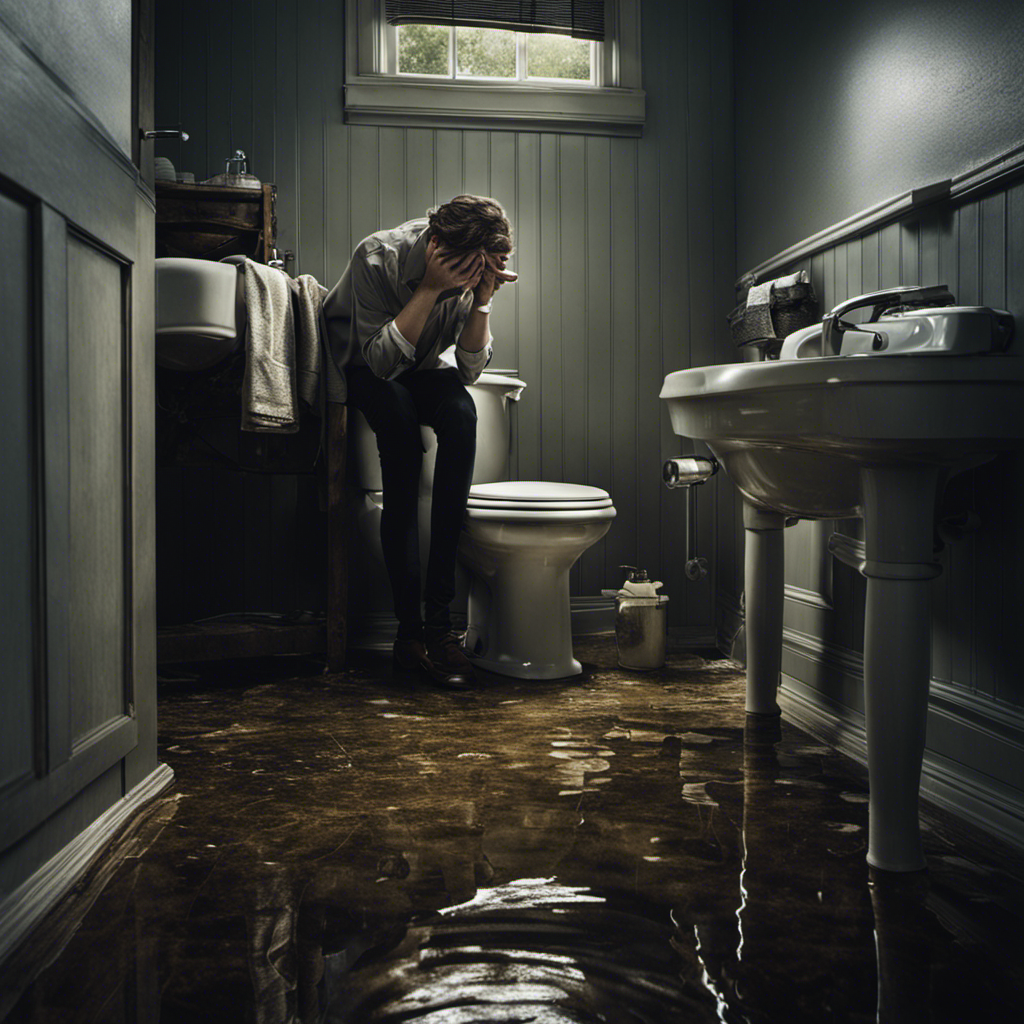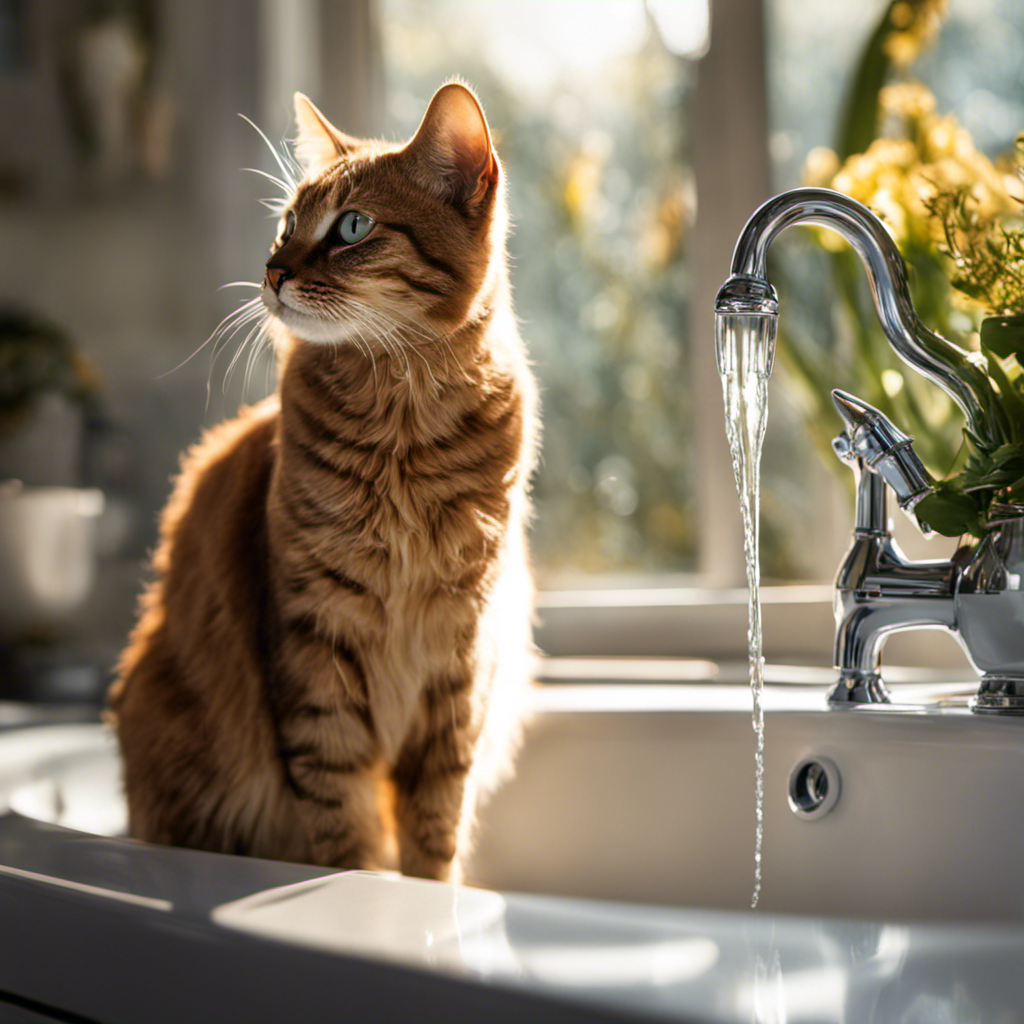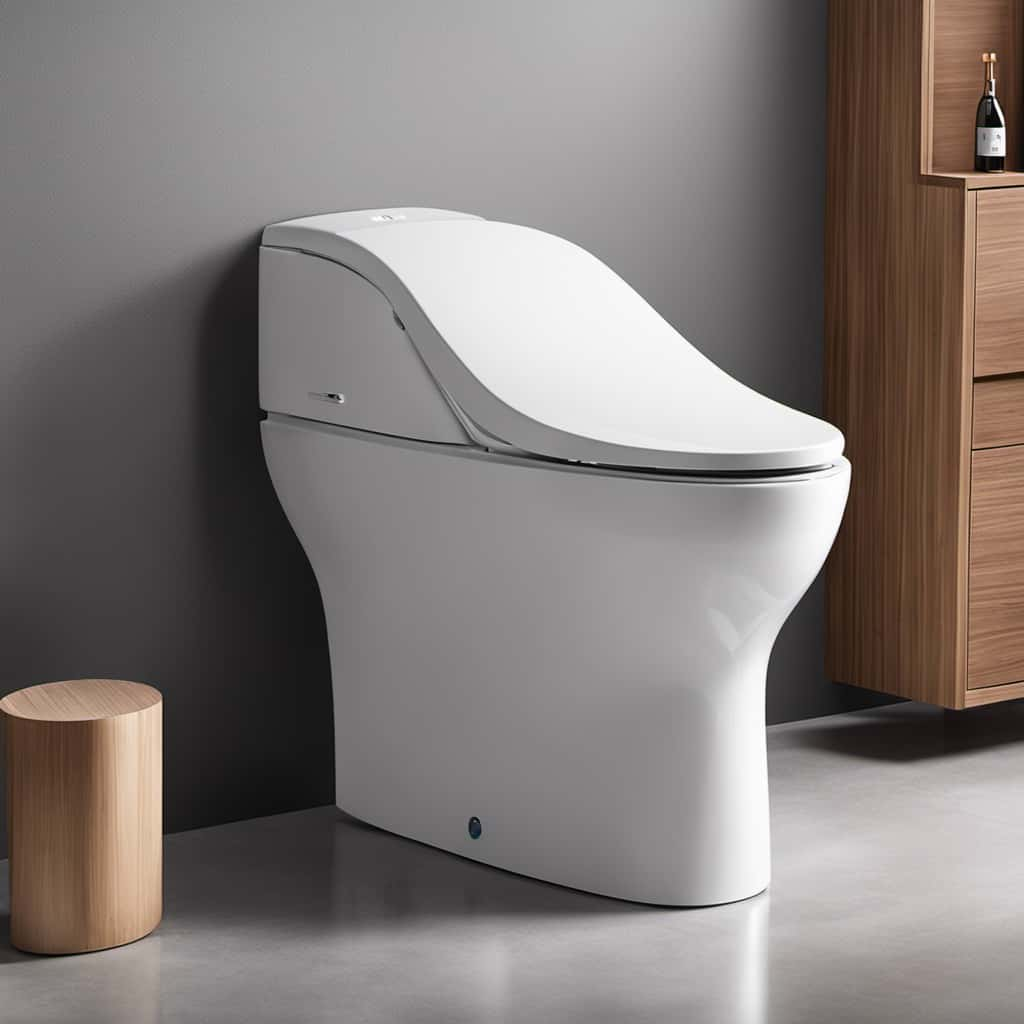We understand your perspective: ‘It’s only a couple of hair strands, how bad could it be?’ Allow us to shed some light on the matter.
Flushing hair down the toilet may seem harmless, but it can wreak havoc on your plumbing system. In this article, we will delve into the impact of flushing hair, the risks to your household plumbing, and provide preventive measures to avoid costly clogs.
Get ready to master the art of keeping your drains hair-free!
Key Takeaways
- Flushing hair can easily clog pipes, leading to blockages and backups.
- Proper disposal of hair in waste bins or donation for wig-making or oil spill cleanup efforts is crucial.
- Hair clogs disrupt treatment plants, increasing maintenance costs.
- Flushing hair contributes to water pollution and harms aquatic life.
The Impact of Flushing Hair on Plumbing
Flushing hair in toilets can have detrimental effects on plumbing systems. When hair is flushed down the toilet, it can easily clog the pipes, leading to blockages and backups. This is especially problematic in sewage treatment plants, where the accumulation of hair can disrupt the treatment process and cause equipment malfunctions.
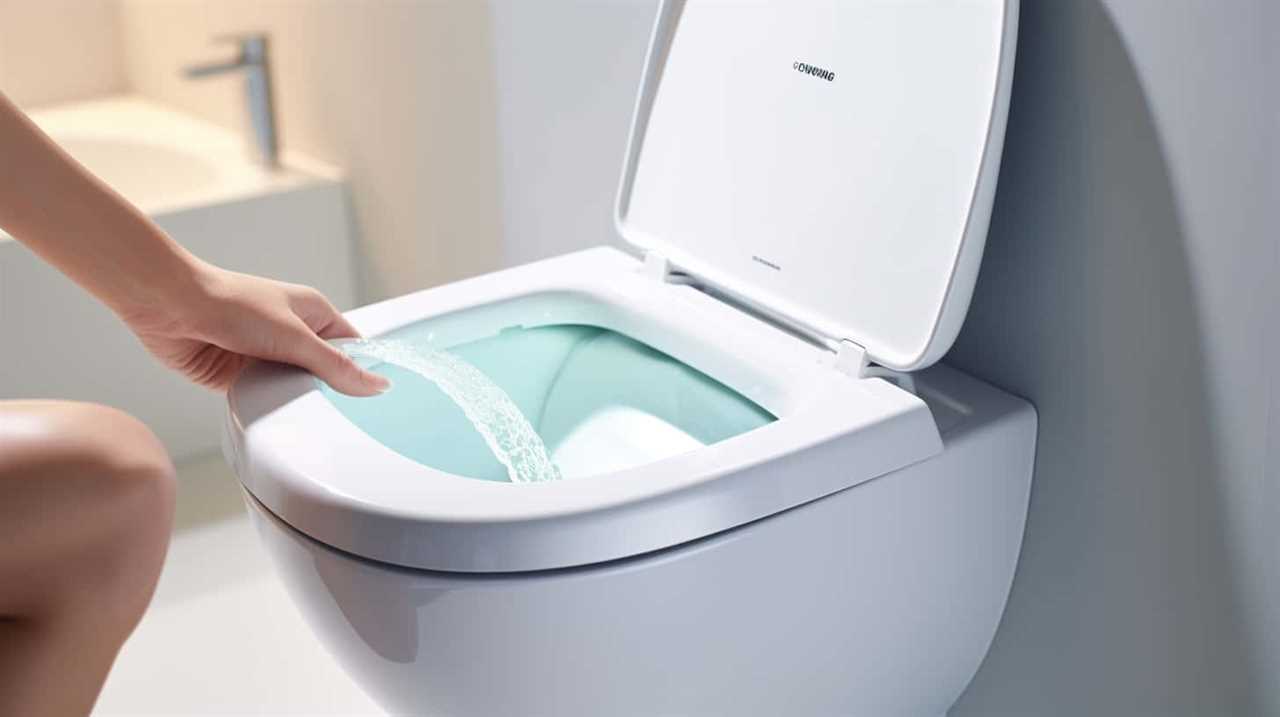
Sewage treatment plants utilize various methods to remove hair from the wastewater, including screens, filters, and chemical treatments. However, these techniques aren’t foolproof and can be time-consuming and costly. Therefore, it’s crucial to avoid flushing hair in toilets to prevent these issues.
Instead, hair should be properly disposed of in waste bins or collected and donated for wig-making or oil spill cleanup efforts. By taking these simple steps, we can help maintain the functionality and efficiency of our plumbing systems while also reducing the burden on sewage treatment facilities.
How Hair Clogs the Toilet
When it comes to flushing hair down the toilet, there are several risks and potential problems to consider.
First, hair has a tendency to clump together and form blockages in the plumbing system, leading to clogged toilets and drains.

Additionally, hair can wrap around other debris in the pipes, exacerbating the issue and making it more difficult to clear.
Instead of flushing hair, it’s advisable to dispose of it in the trash or use hair catchers in drains to prevent these plumbing issues.
Flushing Hair Risks
Hair poses a risk of clogging the toilet, as it can accumulate and obstruct the plumbing system. When hair is flushed down the toilet, it can clump together and form blockages in the pipes. This can lead to various consequences, such as:
- Increased water pressure: As the hair accumulates, it restricts the flow of water, causing a buildup of pressure within the plumbing system.
- Pipe corrosion: Hair contains chemicals from hair care products, which can corrode the pipes over time, leading to leaks and further clogs.
- Expensive repairs: Removing hair clogs can be a costly process, requiring professional assistance and potentially damaging the pipes.
- Environmental impact: Flushing hair contributes to water pollution and can harm aquatic life.
- Alternatives for disposal: Instead of flushing hair, consider disposing of it in a waste bin or using a drain strainer to catch hair before it enters the pipes.
Plumbing Problems With Hair
Toilet clogs can occur due to the accumulation of hair in the plumbing system. Hair shedding is a natural process that happens to everyone. On average, individuals lose about 50 to 100 hairs per day. When these hairs are flushed down the toilet, they can easily get caught in the pipes.

Over time, the hair can intertwine with other materials, such as soap scum or grease, creating a solid mass that obstructs the flow of water. This can lead to a clogged toilet or even a more serious plumbing issue.
To prevent hair clogs, it’s essential to practice hair loss prevention techniques. These include regularly cleaning hairbrushes and drains, using drain catchers, and avoiding flushing hair down the toilet.
Alternatives to Flushing
To avoid clogging the toilet with hair, we can explore alternative methods of disposal. Flushing hair down the toilet may seem convenient, but it can lead to serious plumbing problems and have negative environmental impacts. Here are some hair disposal methods to consider:
- Collect and throw in the trash: Place a small bin in your bathroom and collect the hair after brushing or showering. Simply throw it in the trash when the bin is full.
- Use a hair catcher: Install a hair catcher in your shower drain or bathtub to prevent hair from going down the drain. Empty the hair catcher regularly.
- Compost: If you have a compost bin, you can add hair to it. Hair is rich in nitrogen and can contribute to the decomposition process.
- Donate: If your hair is long enough, you can consider donating it to organizations that make wigs for cancer patients.
- Recycle: Some salons and organizations accept hair donations to make oil spill mats and other environmental products.
The Role of Hair in Sewer Blockages
Our research has shown that the accumulation of hair in sewer systems can contribute to blockages. Hair blockages occur when hair is flushed down the toilet or washed down the drain and it collects and combines with other substances, such as grease and debris, forming clogs in the sewer pipes.

These blockages can cause serious issues, such as sewage backups and overflows, leading to costly repairs and potential health hazards. It’s important to be mindful of proper hair disposal methods to prevent these blockages. Instead of flushing hair, it’s recommended to collect it and throw it in the trash. By doing so, we can help maintain the functionality of sewer systems and prevent unnecessary blockages.
Now, let’s explore the environmental consequences of flushing hair.
Environmental Consequences of Flushing Hair
When we flush hair down the toilet, it can lead to clogs in sewage systems. These clogs can cause backups and overflows, resulting in costly repairs and potential damage to infrastructure.
Additionally, hair that makes its way into waterways can have detrimental effects on aquatic life, disrupting ecosystems and causing harm to fish and other organisms.

Moreover, hair can pose challenges for water treatment facilities, as it can tangle and accumulate, making it difficult to remove during the treatment process.
Hair Clogs Sewage Systems
Flushing hair in the toilet can lead to clogs in sewage systems, causing potential environmental consequences. When hair is flushed down the toilet, it can accumulate and form blockages in pipes and sewer lines. These clogs can restrict the flow of wastewater, leading to backups and overflows. This not only poses health risks but also has a significant impact on wastewater treatment.
Here are five key points to consider regarding the impact of hair in sewage systems:
- Hair clogs can disrupt the normal functioning of treatment plants, leading to increased maintenance and repair costs.
- The presence of hair in septic systems can impair their efficiency, potentially causing system failures and costly repairs.
- Clogged sewer lines can result in raw sewage being discharged into water bodies, contaminating the environment and threatening aquatic life.
- Removing hair clogs from sewage systems requires the use of chemicals or mechanical methods, which can further harm the environment.
- Proper disposal of hair in waste bins, rather than flushing it down the toilet, is a simple but effective way to prevent clogs and minimize the environmental impact.
Harmful to Aquatic Life
To understand the environmental consequences of flushing hair, it’s important to recognize the harmful effects it can have on aquatic life. When hair is flushed down the toilet, it enters the sewage system and eventually makes its way into rivers, lakes, and oceans. Hair isn’t biodegradable and can take a long time to break down in water. As a result, it can accumulate in these bodies of water and have a detrimental impact on the ecosystem.
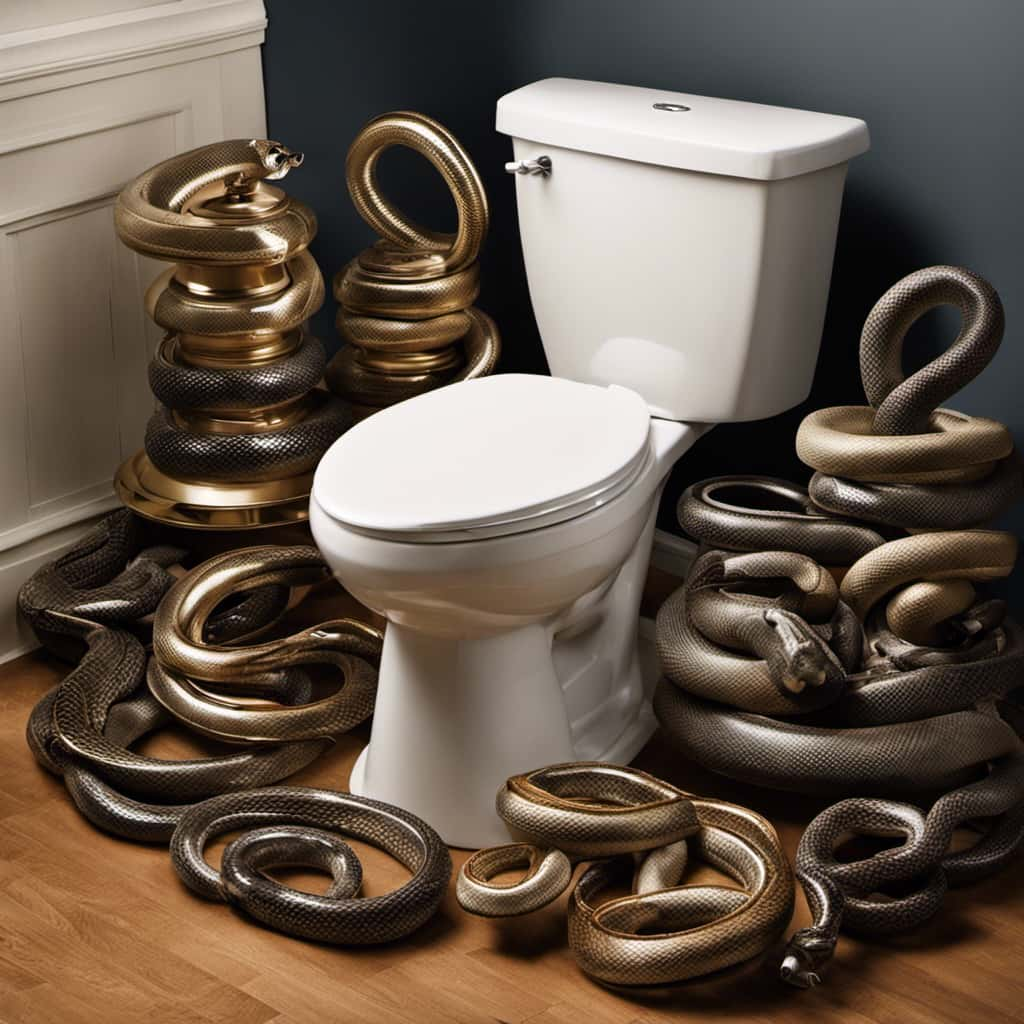
The harmful effects of hair on aquatic life include entanglement, suffocation, and ingestion. Marine animals such as fish, turtles, and birds can become entangled in hair, leading to injury or death. Additionally, hair can obstruct the gills of fish, preventing them from obtaining oxygen and disrupting their respiratory system. Ingestion of hair can also cause internal blockages and digestion issues for aquatic animals.
Water Treatment Challenges
As we delve into the water treatment challenges associated with flushing hair, it’s crucial to consider the detrimental impact it has on the environment. Flushing hair down the toilet can lead to a series of issues that affect water quality and the overall health of ecosystems. Here are some key points to highlight the environmental consequences:
- Hair clogs: Hair isn’t easily broken down and can clog pipes and sewer systems, leading to costly repairs and maintenance.
- Water treatment innovations: Traditional water treatment plants aren’t equipped to effectively remove hair from wastewater, which can result in clogged filters and decreased treatment efficiency.
- Impact on water quality: The presence of hair in water bodies can lead to decreased oxygen levels, harming aquatic life and disrupting the delicate balance of ecosystems.
- Microplastic pollution: Hair contains microplastics that can be released into the environment, contributing to the global issue of microplastic pollution.
- Sustainable solutions: Implementing innovative technologies and practices, such as installing hair traps in drains or using natural hair removal methods, can help minimize the impact on water quality and ecosystems.
Risks to Household Plumbing Systems
Clogging is a common risk faced by household plumbing systems when hair is flushed down the toilet. Hair, being long and sticky, can easily accumulate in the pipes and create blockages. To understand the potential risks in more detail, let’s take a look at the following table:
| Risk | Description | Solution |
|---|---|---|
| Clogging | Hair can form clumps and block the flow of water. | Use hair catchers or screens in drains to trap hair. |
| Pipe damage | Hair can wrap around pipes and cause damage. | Regularly clean pipes or consider professional cleaning. |
| Sewer backups | Hair can contribute to sewer line backups. | Schedule regular maintenance to prevent backups. |
As you can see, flushing hair down the toilet can lead to costly and inconvenient plumbing issues. It is important to prioritize hair clog prevention and proper hair care maintenance. In the next section, we will explore alternatives to flushing hair that can help mitigate these risks.

Alternatives to Flushing Hair
So, what can we do instead of flushing hair down the toilet? There are several hair disposal methods that aren’t only more eco-friendly but also help prevent clogs in our plumbing systems. Here are five alternatives to consider:
- Collect hair in a hair catcher or strainer: Place a hair catcher or strainer over the drain in your shower or bathtub to catch hair before it goes down the drain.
- Dispose of hair in the trash: After brushing or cutting your hair, collect it and place it in a small bag or container, then dispose of it in the trash.
- Compost hair: If you have a compost pile or bin, you can add hair to it. Hair is rich in nitrogen and can help enrich the compost.
- Donate hair: If you have long hair and are planning to get a haircut, consider donating it to organizations that make wigs for cancer patients.
- Repurpose hair: Some people use collected hair as a natural garden deterrent to keep away pests like rabbits or deer.
Can Hair Be Recycled or Composted
When it comes to hair disposal, recycling and composting are two potential options to consider.
Hair can be recycled in various ways, such as being repurposed into insulation materials or used to create pet beds and mats.
Additionally, hair can also be composted, as it’s a rich source of nitrogen that can help nourish plants and improve soil health.
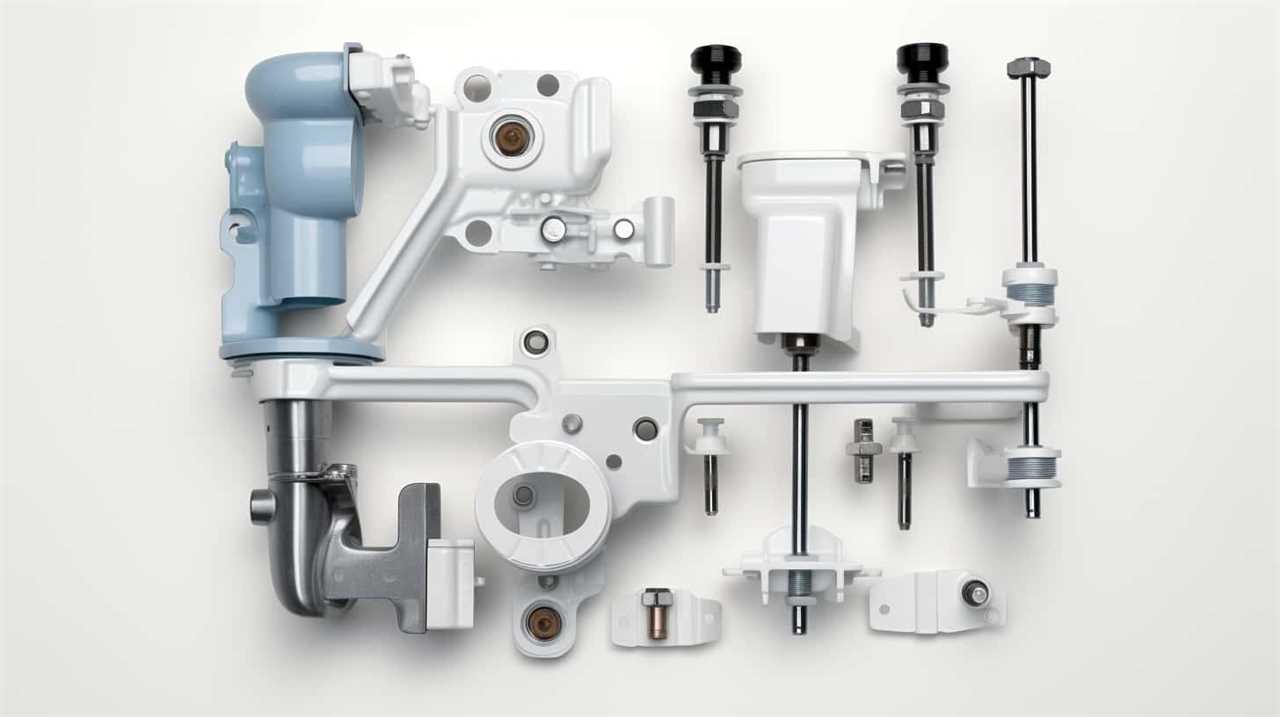
However, the feasibility of hair composting on a larger scale needs to be explored further to ensure proper processes and regulations are in place.
Hair Recycling Options
We can recycle or compost hair as a sustainable option for its disposal. Hair recycling offers several benefits, including reducing waste and promoting a circular economy.
Here are five hair recycling options to consider:
- Hair donation: Donating your hair to organizations that make wigs for cancer patients or hair mats for oil spills is a meaningful way to recycle your locks.
- DIY hair crafts: Get creative and repurpose your hair by using it for crafting projects like making jewelry, art, or even stuffing pillows.
- Composting: Hair is a rich source of nitrogen and can be composted along with other organic materials to create nutrient-rich soil.
- Pet bedding: Hair can be used as a natural and cozy bedding material for pets, providing insulation and comfort.
- Garden mulch: Chopped or shredded hair can be used as a natural mulch in your garden, helping to retain moisture and suppress weed growth.
Hair Composting Feasibility?
Although hair can be recycled or composted, it’s important to consider its feasibility as a sustainable disposal option.
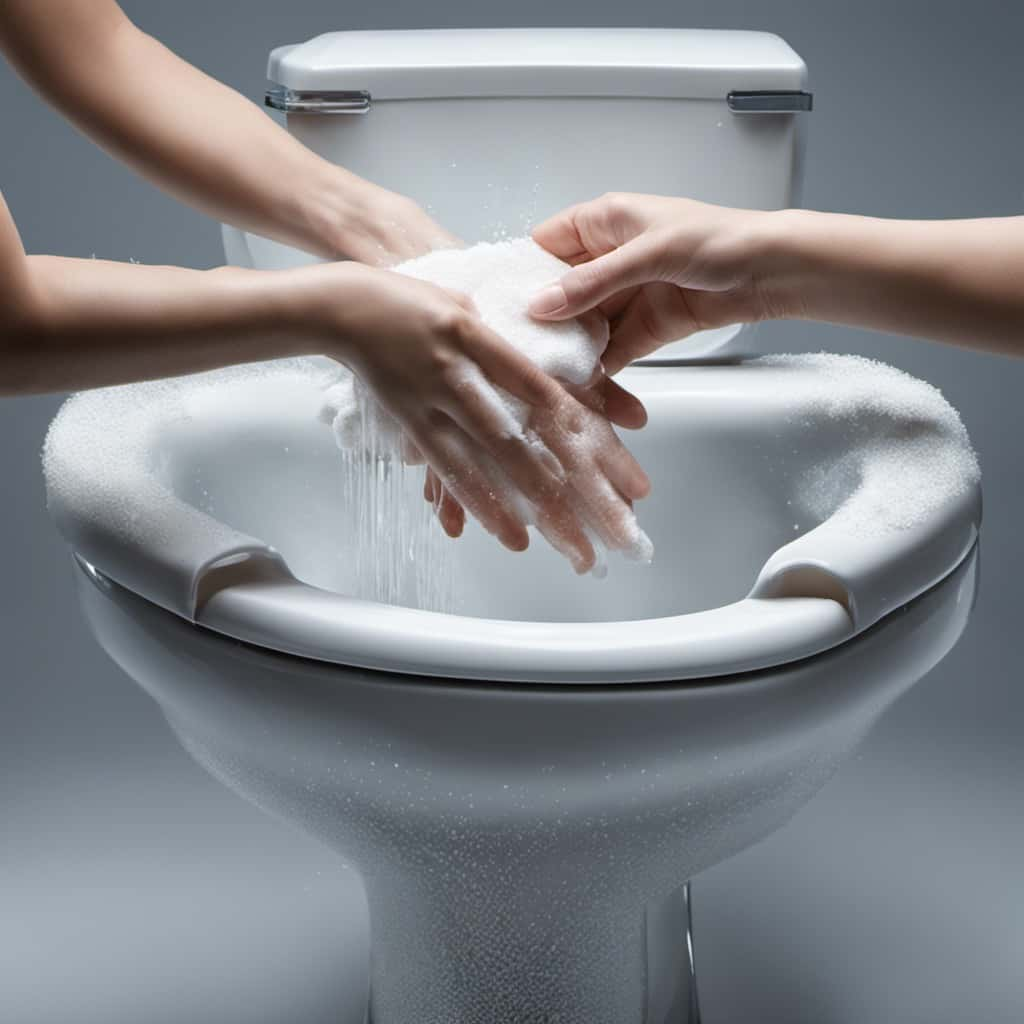
Hair composting methods involve collecting hair clippings and incorporating them into compost piles or bins.
The benefits of hair composting are numerous. Firstly, hair is rich in nutrients like nitrogen, phosphorus, and potassium, which are essential for plant growth. By composting hair, these nutrients are returned to the soil, reducing the need for chemical fertilizers.
Additionally, hair composting helps to divert waste from landfills, reducing methane emissions and promoting a circular economy.
However, there are challenges to hair composting, such as the need for proper decomposition conditions and the potential for odors. Further research is needed to optimize hair composting methods and address these challenges for widespread implementation.

Proper Disposal Methods for Hair
To properly dispose of hair, it’s important to consider alternative methods apart from flushing it down the toilet. Proper hair care involves not only grooming and styling but also responsible waste management. Here are five effective hair disposal methods to consider:
- Donate your hair: If you have long hair and are planning to cut it, consider donating it to organizations that make wigs for cancer patients. This way, your hair can have a positive impact on someone’s life.
- Compost it: Hair is biodegradable and can be a valuable addition to your compost pile. Just make sure to cut it into smaller pieces to speed up the decomposition process.
- Use it for crafts: Get creative and repurpose your hair for various crafts like making jewelry, hair accessories, or even artwork. This way, you can give your hair a second life and reduce waste.
- Dispose of it in the trash: If none of the above options are feasible, simply wrap your hair in tissue or a biodegradable bag and dispose of it in the regular trash bin.
- Research local recycling options: Some hair salons and recycling centers accept hair for recycling purposes. Look for such facilities in your area and inquire about their hair disposal policies.
The Importance of Regular Drain Maintenance
Regular drain maintenance is crucial to prevent clogs and maintain the proper functioning of your plumbing system. One of the main causes of clogged drains is hair accumulation. As we discussed earlier, different hair removal methods can result in hair being flushed down the toilet or washed down the shower drain. Over time, this can lead to blockages and hinder the flow of water through the pipes. To ensure the longevity of your plumbing system, it is important to prioritize regular drain maintenance. This includes both DIY methods such as using drain cleaners and natural solutions, as well as seeking professional drain cleaning services.
Here is a table to illustrate the importance of professional drain cleaning:
| Benefits of Professional Drain Cleaning |
|---|
| Effective removal of hair and debris |
| Prevention of future clogs |
| Improved overall plumbing system |
Preventive Measures to Avoid Hair Clogs
To prevent hair clogs, we can take several preventive measures to keep our drains clear and functioning properly. Here are five effective ways to avoid hair clogs:
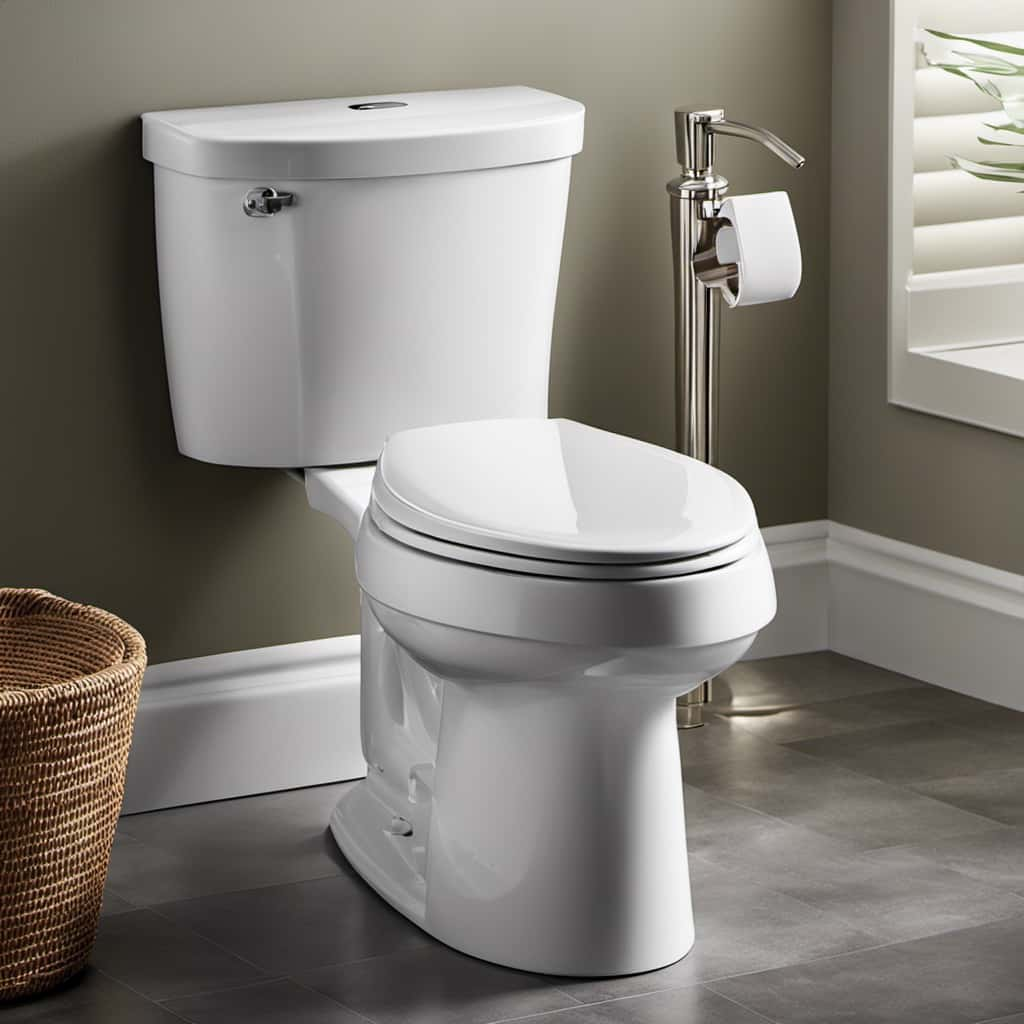
- Install a hair drain guard: These simple devices can be placed over the drain to catch hair before it goes down the pipes. They’re affordable, easy to clean, and can significantly reduce clogs caused by hair shedding.
- Regularly clean the drain: Use a drain cleaner or a mixture of vinegar and baking soda to flush out any accumulated hair and debris. This should be done at least once a month to maintain a clear and efficient drain.
- Brush hair before showering: By brushing your hair before getting in the shower, you can remove loose hairs that might otherwise end up in the drain.
- Avoid excessive hair products: Using excessive amounts of hair products can lead to residue buildup in the drain, attracting more hair and causing clogs. Use products sparingly to minimize the risk.
- Schedule professional drain maintenance: Regular inspections and maintenance by a professional plumber can help identify potential issues and prevent hair clogs from becoming major problems.
Common Myths About Flushing Hair
Now let’s debunk some common myths about flushing hair down the toilet.
One prevalent myth is that flushing hair won’t cause any clogs because it’s so small. However, this is far from the truth. While individual strands of hair may be small, when they come together, they can form a tangled mess that easily clogs pipes and drains.
Another myth is that flushing hair is a convenient way to get rid of it. In reality, flushing hair can lead to costly plumbing repairs and damage to the sewage system.
It’s important to remember that hair shedding is a natural process and preventing hair loss should be the focus, rather than trying to dispose of it in a way that can cause problems.

Hair Products and Their Impact on Plumbing
When it comes to the impact of hair products on plumbing, we need to be mindful of what we’re rinsing down the drain. Hair care products, although essential for maintaining healthy and beautiful hair, can have a significant impact on wastewater treatment systems and the overall health of our plumbing.
Here are five key points to consider:
- Many hair care products contain chemicals and ingredients that can be harmful to the environment and disrupt the natural balance of wastewater treatment processes.
- Ingredients like sulfates and parabens, commonly found in shampoos and conditioners, can be difficult to break down and may accumulate in pipes, leading to clogs and blockages.
- Hair products that contain oils and heavy moisturizers can leave residue on the inner walls of pipes, attracting hair and other debris, resulting in potential blockages.
- Excessive use of hair styling products such as gels, sprays, and mousses can create a sticky residue that can cling to pipes and trap hair, leading to plumbing issues.
- Regularly cleaning and maintaining your drains can help prevent clogs and prolong the lifespan of your plumbing system.
Now that we understand the impact of hair products on plumbing, let’s explore some tips for keeping drains hair-free.
Tips for Keeping Drains Hair-Free
To prevent hair from clogging your drains, we can take a few simple steps to ensure a hair-free plumbing system.

Regular maintenance and hair removal techniques are key to keeping your drains clear and preventing costly plumbing issues.
One effective method is to use a drain strainer or hair catcher in your shower or bathtub. These devices catch the hair before it has a chance to go down the drain.
Additionally, it’s important to clean your drains regularly to remove any accumulated hair and debris.
One DIY drain cleaning method involves pouring a mixture of hot water, vinegar, and baking soda down the drain. This helps to dissolve any hair or buildup that may be causing a blockage.
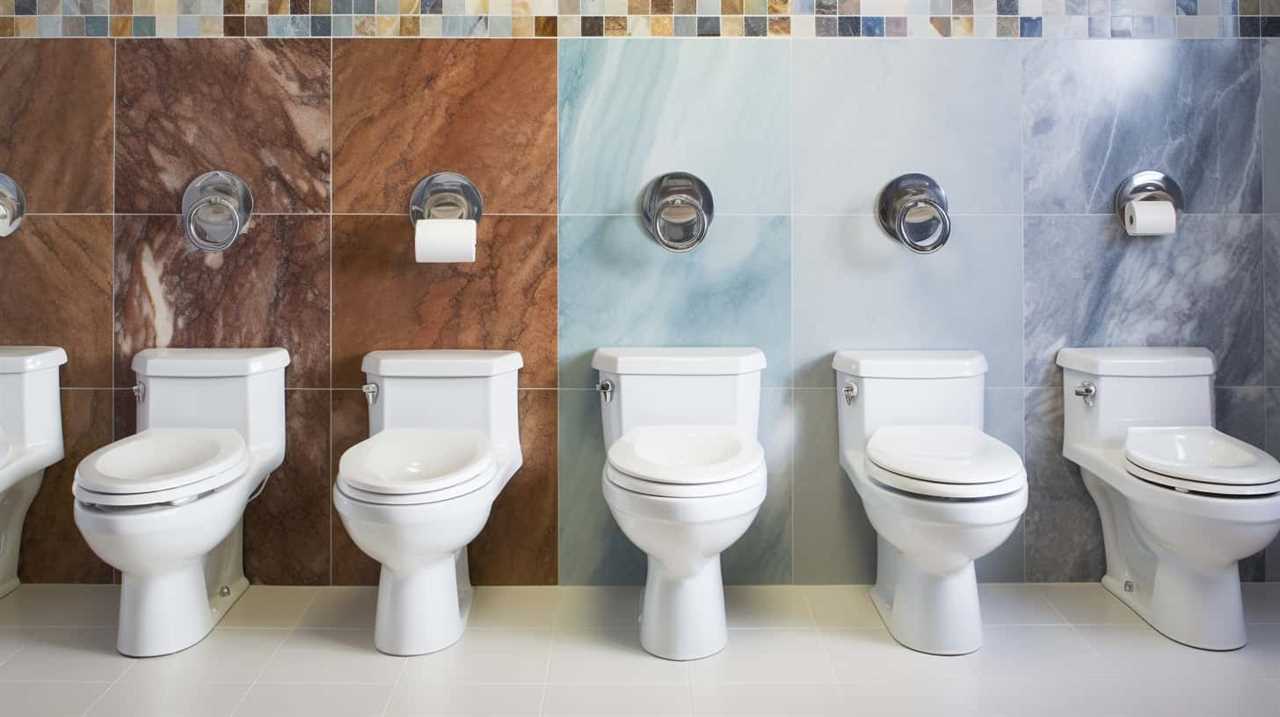
Frequently Asked Questions
Can Flushing Hair Down the Toilet Cause Damage to the Plumbing System?
Flushing hair down the toilet can lead to damage in the plumbing system. It can cause clogged drains, requiring frequent plumbing maintenance. It is important to dispose of hair properly to avoid these issues.
What Are the Environmental Consequences of Flushing Hair?
Flushing hair in the toilet can have negative environmental consequences. Hair can clog water treatment plants, leading to increased maintenance costs and decreased efficiency. It can also harm marine ecosystems if it enters water bodies through sewage systems.
Are There Any Alternatives to Flushing Hair?
There are alternative ways to dispose of hair instead of flushing it down the toilet. Some options include using hair removal techniques like waxing or DIY hair care products to minimize waste and environmental impact.
Can Hair Be Recycled or Composted?
Can hair be recycled or composted? Hair recycling methods are limited due to its protein structure, but some organizations repurpose hair for oil spill cleanup. Composting hair can add nutrients to soil and improve water retention.

What Are the Proper Disposal Methods for Hair?
Proper disposal methods for hair include throwing it in the trash or composting it. Flushing hair in the toilet is not recommended as it can clog pipes. Taking care of your hair by using appropriate products and regular maintenance can help reduce waste.
Conclusion
In conclusion, flushing hair down the toilet may seem harmless, but it can have significant consequences for our plumbing systems and the environment. Like a tangled web, hair can clog drains and sewer lines, leading to costly repairs and environmental damage.
To avoid these issues, it’s important to take preventive measures, such as using drain catchers and disposing of hair properly.
Let’s untangle this problem and keep our drains hair-free for a smoother and more sustainable future.





